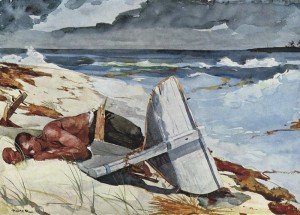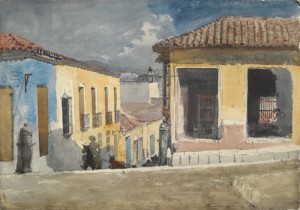
Watercolor is as lively, spontaneous, and engaging as it is beguiling and unpredictable. It is medium with a determination of its own. An artist that wishes to conquer this medium must do so with earnest effort, patience, and hard work. However, those that do find their way with watercolor are better off for it.
As unpredictable as the medium is, it’s history to be accepted as a true artist’s medium in the art world, one with respect, was just as unpredictable. Until the late 1800s, watercolor was considered a medium for amateurs, or usually used by artists as studies for other mediums. Through the works of Winslow Homer (1836-1910), America began taking on a dominant role in the world of watercolor.

Homer revolutionized the watercolor medium and was the first to popularly produce it on paper with meaning. He began his career as a self-taught artist working for Harper’s Bazaar. Later, he lived an isolated life, painting near his studio in Prout’s Neck, Maine. He preferred painting outdoors as much as possible, saying, “In the studio you get composition, but you lose freshness: you miss the subtle and, to the artist, the finer characteristics of the scene itself.”
Much of Homer’s most revered watercolors were painted later in his life while in the Bahamas and Bermuda. He painted masterfully at this time with bold wet brushstrokes, and he, himself, said that this period was, “as good work as I ever did.”
